At Home with John Wylie in His Shed
Before we journey to South Australia to visit John Wylie in his shed I want to extend a very warm welcome to G.G. in New South Wales who has just joined our on-line art community.
And now off to South Australia.
Recently we began a new theme to run through our AnArt4Life blog - we have called it At Home.
A little while back Julie wrote a post that paid tribute to artists who work at home; those who paint, sketch and draw purely for the love of portraying, expressing and creating. As Julie said:
They take lessons, join art groups, and spend hours and hours on tiny details. They often just give away their paintings or may perhaps show their work in local art shows or cafes. Most will never be famous and never make a vast income from their work, if even barely covering costs. Yet many have tremendous talent.1
Today I would like to introduce you to such artist who is one of our subscribers: John Wylie from Port Elliot in South Australia.
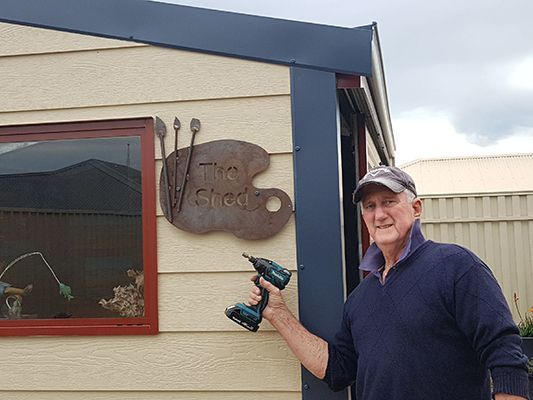
John is recently retired and now has the time to spend more mental and physical energy on his love of painting. He has in fact built a shed for this venture. I love the metal palette with brushes which John also made. The beautiful rusting plaque makes the statement that this shed has a significant sense of place in this artist's life.
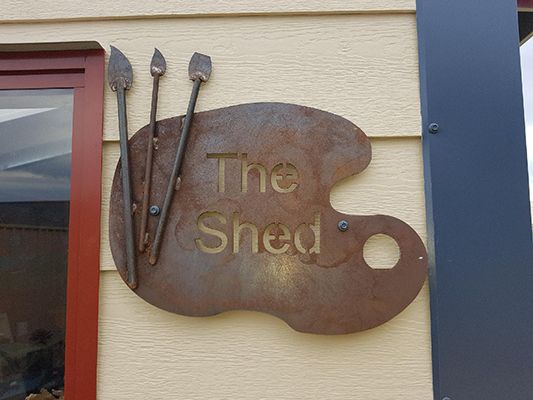
Let's take a closer look at his shed which is a real beauty. Most people would give their eye teeth to have a shed like this to paint in. I often talk about a sense of place and how important this is to fulfilling a need to express creatively, your view of your world.
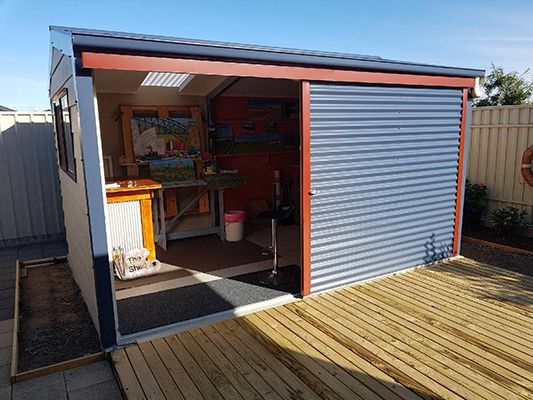
So come inside to this warm and inviting studio and see what John Wylie is creating.
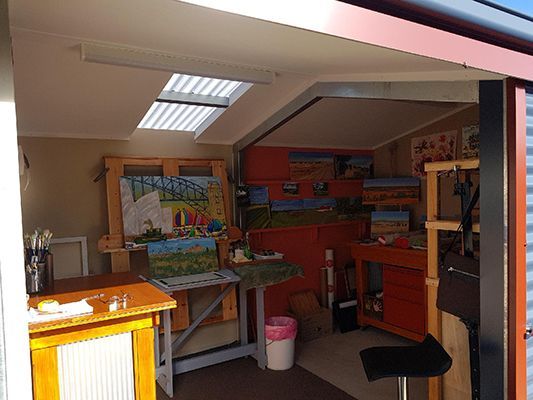
In conversation with John I have learnt that he loves red dirt and the seminal inspiration driving John to paint was holidaying regularly in Broken Hill (New South Wales) and meeting some of the local artists.
John has been inspired by The Brushmen of the Bush 2 who commenced their careers in Broken Hill and so I am going to commence with John's painting of one of the mines at Broken Hill. I really like the way he has represented the rusting structures: red dirt and rusting metal are iconic in the Australian outback landscape. I share the same love of a rusting iron roof or the glorious texture made by years of corrosion on a manmade structure.
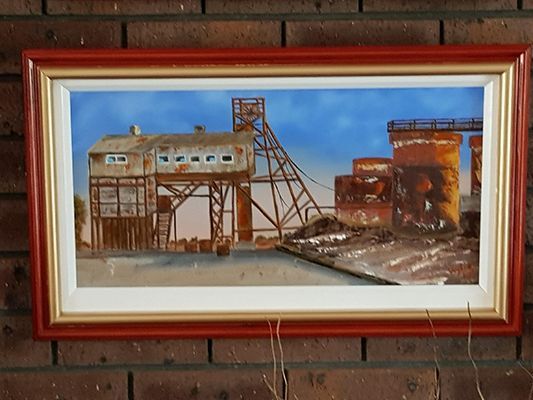
I asked John to take photos of his paintings in their natural setting in his home and shed. At Home artists tend to place their paintings around their home environment as they are part of the family.
The love of the Australian outback is very present in the paintings. Below is an idyllic scene from the Northern Territory which captures the redness that characterises this landscape setting the framework for the bluegreen eucalypts and the treasured waterhole.
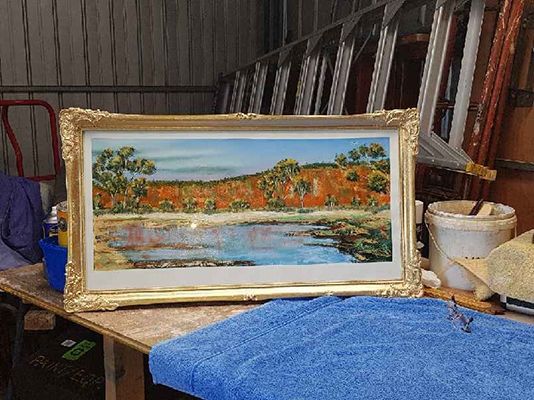
And now moving down to South Australia and the golden paddocks around Port Elliot, near to where John lives. What caught my eye in this painting is the layered landscape with the bluegreen vegetation and wetlands sandwiched against the golden grass across the land and hills. Don't miss the delicate touch of the white cockatoos in the distance.
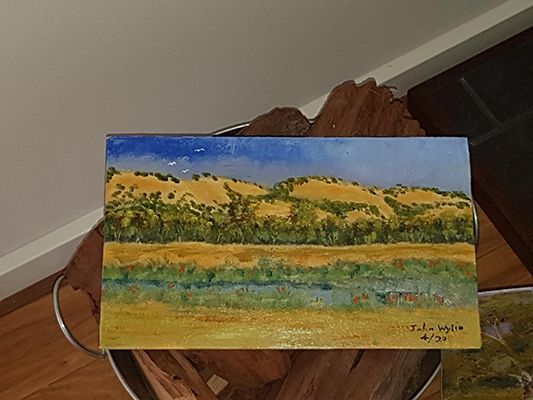
Still in the same area of Port Elliot, John has created a delightful image of a farm with the rolled bales of hay within the layered green and gold bands of landscape. Far in the distance, dwarfed by the landscape and the distance, is the shining roof of the homestead: in a way somewhat breaking the harmony of the landscape yet essential to it. I really like this unexpected touch that John uses.
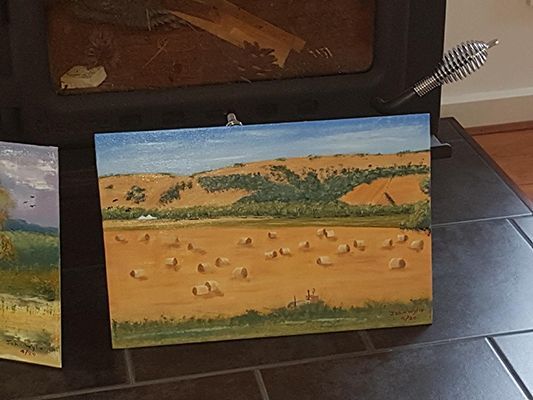
We can appreciate that John loves, and is at home, in this golden landscape as it appears again in the painting of a scene near Hawker in South Australia. The soft hills covered with sparce green bushes oversee the remains of an early settler's home which is being enveloped by the encroaching red dirt. The foreground of tuffs of spikey grass seem to be forming a protective barrier that we all know will eventually, along with the red soil, bury the ruins.
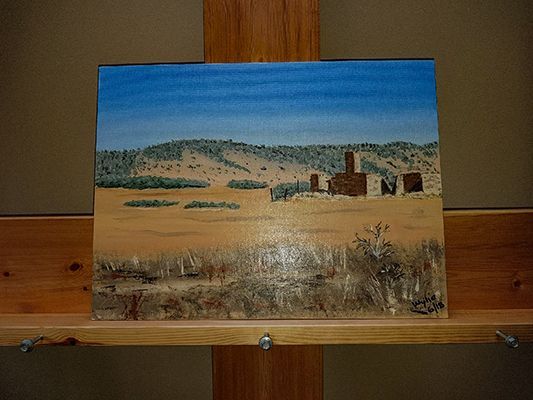
Below John has created his perception of Steinkes Farm on the Eyre Peninsula in South Australia. This painting for me has a special quality: it is alive. It is to me like a dance: the eucalypts, sylph like, dominate the stage and hold the attention of the viewer. The corrugated shed with the rusting roof is almost hidden by the trees but reminds us that humans have worked this land for over 200 years and the two water tanks endorse this presence.
Look carefully and you will be surprised by a pair of galahs high in the gum tree which join in the dance of the eucalypts: This painting has movement and a lovely unbridled touch of the unexpected. I love it.
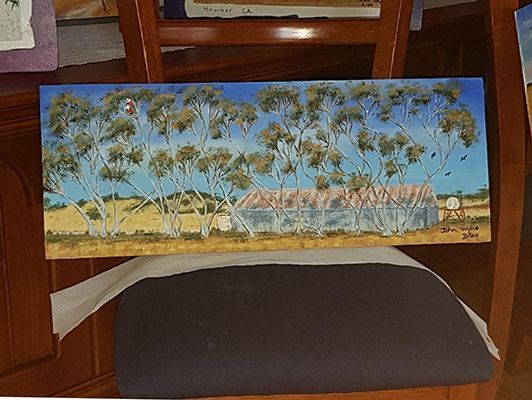
The Aussie Homestead with the high corrugated roof and wide verandah to keep the occupants cool is a significant icon in our rural narrative. John paints these with love and attention to detail which is very much a feature of his semi- naive style.3
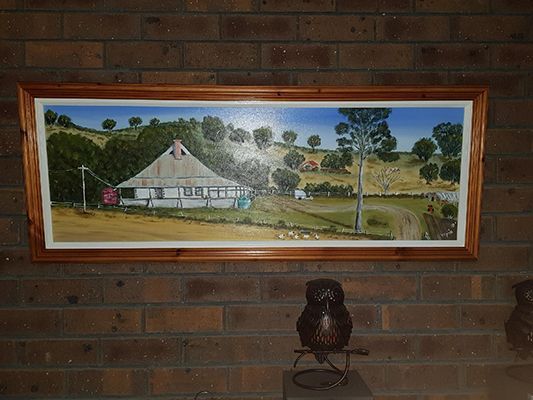
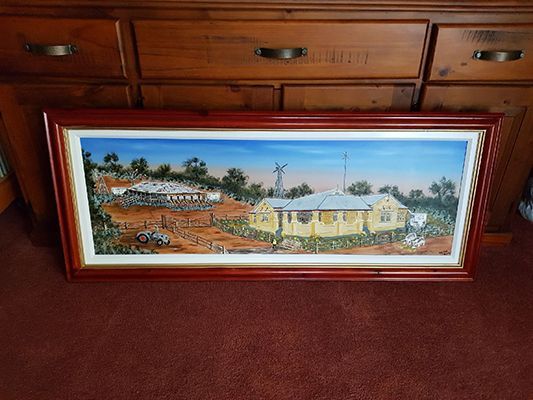
Moving away from the desert and rural scenes below is a delightful rendition (in triptych form) of Victor Habour, South Australia and a very popular holiday spot. It is a fabulous composition with pleasing contrasting colours but again I like the stark dominance of the white crested waves rolling towards the shoreline.
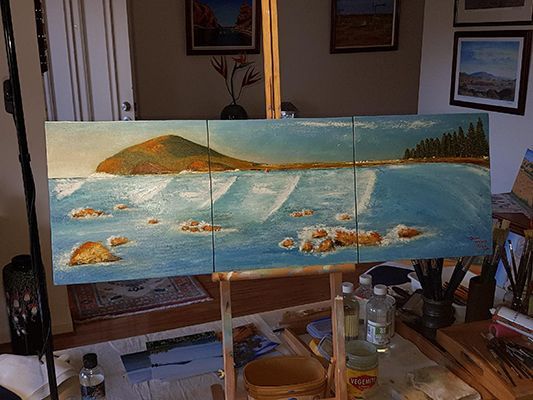
I am sure when you first looked into John Wylie's shed you could see the bright colours of a painting inviting you inside. Here it is with the brilliant colours of the sails on the yachts contrasted with the stark light grey outline of the Sydney Opera House. The scene is enveloped by the magnificent structure of the Sydney Harbour Bridge and controlling the scene with its enormous courage against these towering edifices is one of our beloved Sydney ferries which chug back and forth hundreds of times a day with passengers enjoying the beauty of one of the world's most beautiful harbours. Note that with his eye for detail and the unexpected, the waves have taken on the colours of the sails. A fabulous touch.
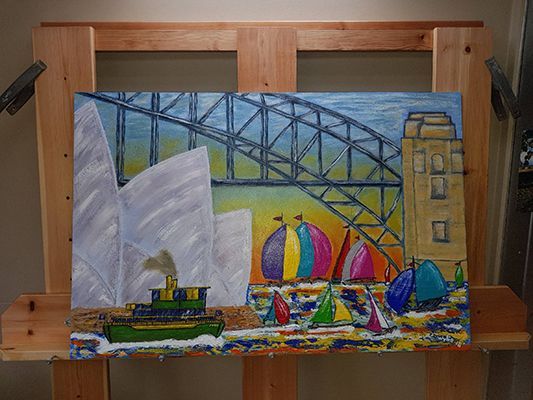
I would classify John as painting in a semi-naive style3 - similar to my own approach. His paintings give note to the details in our world within a grand landscape: a couple of brightly coloured birds, a water tank, the ruins of a building, rust on metal structures. His paintings all tell a story that we can enjoy and appreciate.
Thank you John for being At Home with us and sharing your Sense of Place and View of Your World.
Footnote 1
- For the love of creating.... AnArt4Life blog post by Julie (Bookmark link below)

If you are interested in our At Home theme please check out this link to At Home with Jane who is one of the AnARt4Life blog writers.
Footnote 2
John is a fan of the Brushmen of the Bush inlcuding Jack Absalom and John Pickup OAM. We regularly have a post on John Pickup's work and we have also done posts on all the other Brushmen as well: Jack Absalom, Pro Hart, Hugh Schultz, Eric Minchin. Please use our search tool at the top of the post to read more about these artists.
Footnote 3
I have a great interest and love of Naive Art and I will be writing a post on this topic very soon.

